The AMD Ryzen 3 3300X and 3100 CPU Review: A Budget Gaming Bonanza
by Dr. Ian Cutress on May 7, 2020 9:00 AM EST*We are currently in the middle of revisiting our CPU gaming benchmarks, but the new suite was not ready in time for this review. We plan to add in some new games (Borderland 3, Gears Tactics) and also upgrade our gaming GPU to a RTX 2080 Ti.
Gaming: Ashes Classic (DX12)
Seen as the holy child of DirectX12, Ashes of the Singularity (AoTS, or just Ashes) has been the first title to actively go explore as many of the DirectX12 features as it possibly can. Stardock, the developer behind the Nitrous engine which powers the game, has ensured that the real-time strategy title takes advantage of multiple cores and multiple graphics cards, in as many configurations as possible.
As a real-time strategy title, Ashes is all about responsiveness during both wide open shots but also concentrated battles. With DirectX12 at the helm, the ability to implement more draw calls per second allows the engine to work with substantial unit depth and effects that other RTS titles had to rely on combined draw calls to achieve, making some combined unit structures ultimately very rigid.
Stardock clearly understand the importance of an in-game benchmark, ensuring that such a tool was available and capable from day one, especially with all the additional DX12 features used and being able to characterize how they affected the title for the developer was important. The in-game benchmark performs a four minute fixed seed battle environment with a variety of shots, and outputs a vast amount of data to analyze.
For our benchmark, we run Ashes Classic: an older version of the game before the Escalation update. The reason for this is that this is easier to automate, without a splash screen, but still has a strong visual fidelity to test.
Ashes has dropdown options for MSAA, Light Quality, Object Quality, Shading Samples, Shadow Quality, Textures, and separate options for the terrain. There are several presents, from Very Low to Extreme: we run our benchmarks at the above settings, and take the frame-time output for our average and percentile numbers.
All of our benchmark results can also be found in our benchmark engine, Bench.
| AnandTech | IGP | Low | Medium | High |
| Average FPS | 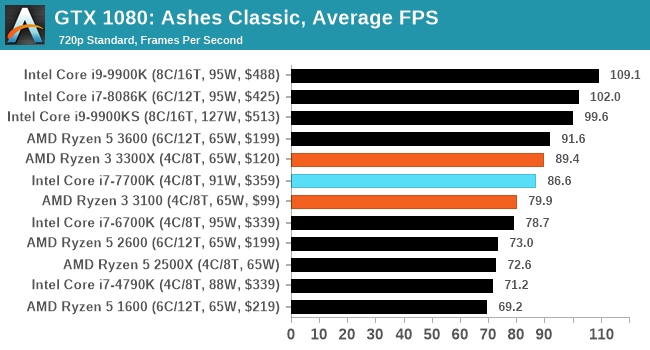 |
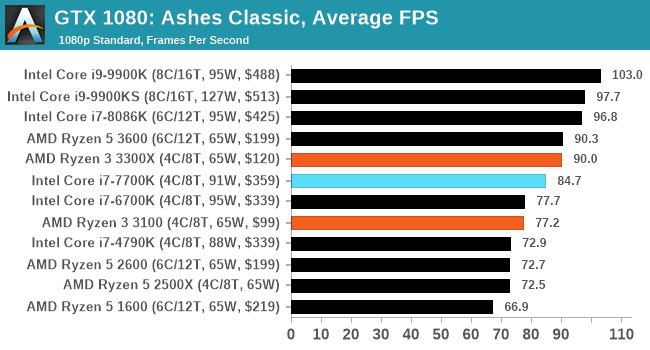 |
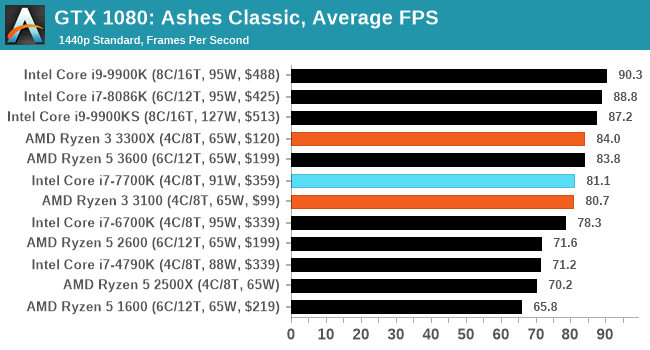 |
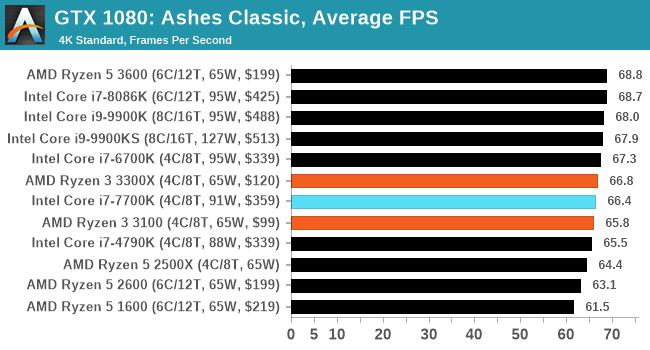 |
| 95th Percentile |  |
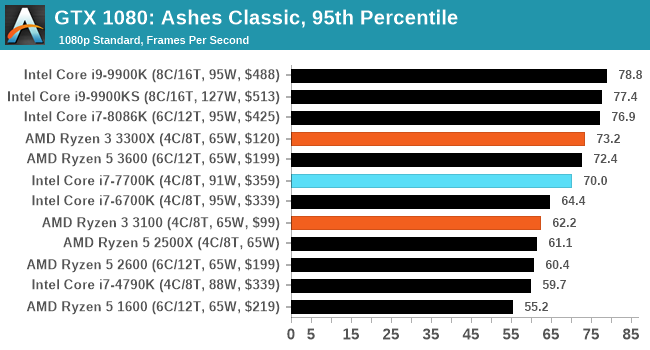 |
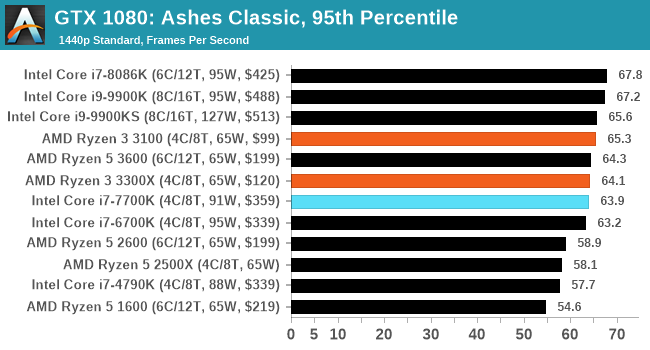 |
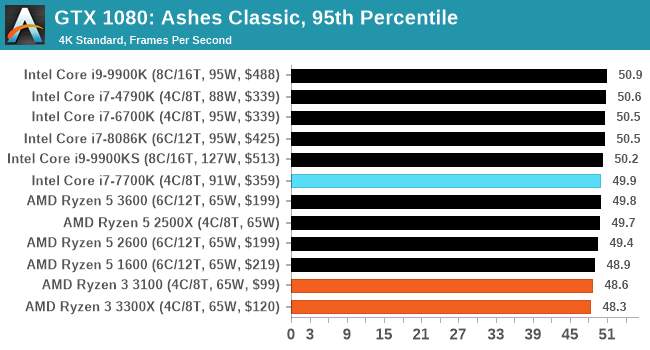 |


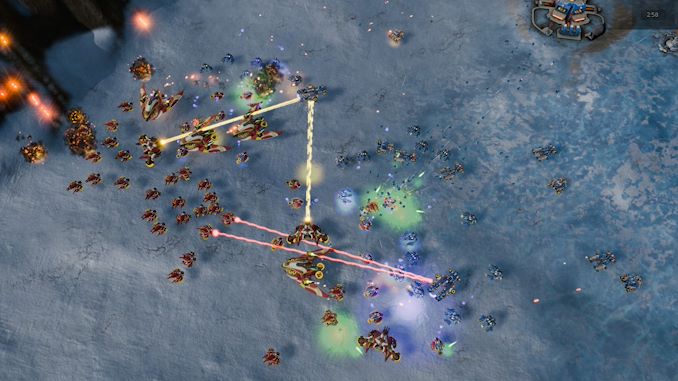









249 Comments
View All Comments
Spunjji - Monday, May 11, 2020 - link
What a worthless comment. Sure, they included high-end Intel CPUs in the gaming sections - but the review isn't *about* high-end CPUs, it's about what you get for the money with these specific AMD CPUs. Comparing AMD's budget gaming CPU to the best available to see how little you lose is a valid comparison to make.jjjag - Tuesday, May 12, 2020 - link
Anandtech can no longer write a simple factual article anymore about any processor. Even this article, which is supposed to be a simple article about a new low-cost processor, uses the word "Bonanza" in the title, mysteriously It also takes multiple jabs at Intel in the body, even though it servers no purpose to the actual content. Every Anand article is now an opinion piece instead of responsible reporting.Spunjji - Tuesday, May 12, 2020 - link
"I hate content with flavour. I want lists of graphs with no words."Good for you. Off you go to userbenchmark, for worthless, context-free information that's appropriately biased towards your preferred team.
rdgoodri - Friday, May 15, 2020 - link
Its pretty positive for AMD, don't catch your angle here.Meteor2 - Tuesday, August 4, 2020 - link
This article absolutely rips into Intel, and rightly so.Your comment is bizarre.
PeterCollier - Thursday, May 7, 2020 - link
And what's the point of these new benchmarks? I prefer PCMark and Userbench. Basically no one is using their new CPU to simulate the neurons of a sea slug, for example. Utterly irrelevant to real-life usage.Mansoor - Thursday, May 7, 2020 - link
The purpose of a benchmark is to produce repeatable and reliable numbers. Just "doing real-life stuff" is not repeatable and will generate different numbers for everyone. If you have a specific use case in mind, you can observe relevant or related benchmarks.PeterCollier - Friday, May 8, 2020 - link
None of my use cases mesh with any of the lousily selected benchmarks in this review.Korguz - Friday, May 8, 2020 - link
then why are you here reading this article ?PeterCollier - Saturday, May 9, 2020 - link
I read articles from all sources, including the silicon-equivalent of Faux News. I find it a good practice to read from sources that you disagree with, or worse, purposely mislead you, because it's important not to create an echo chamber for one's self.